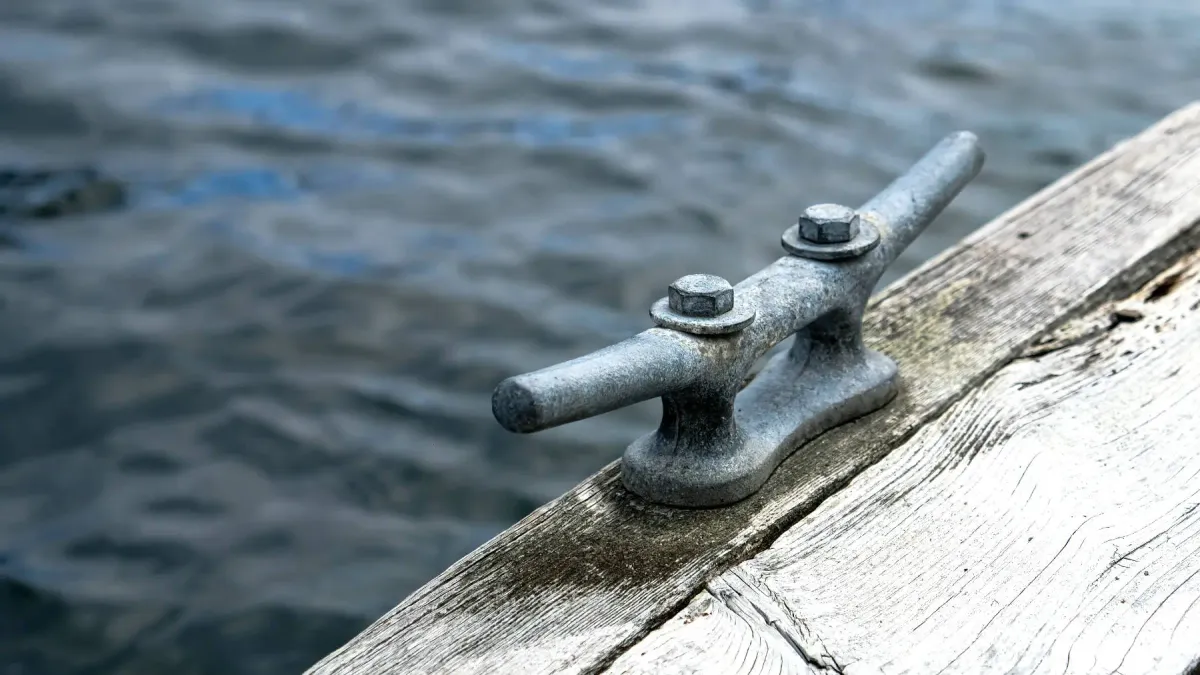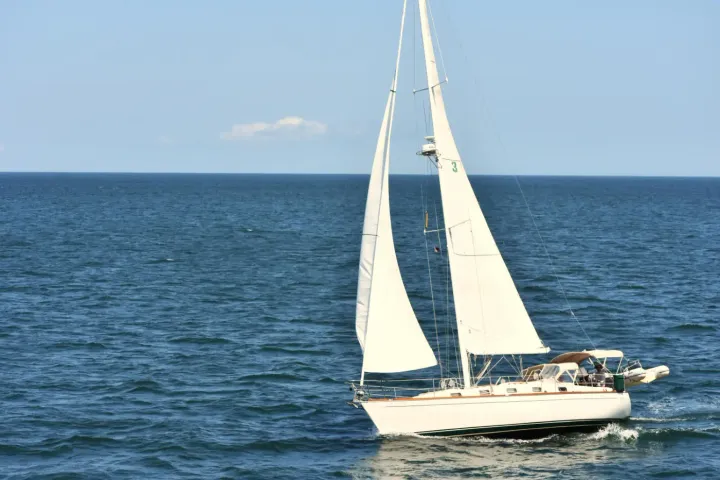Learn how to tie your boat to a mooring properly, step by step. This guide will provide you with essential tips and techniques to ensure your boat stays secure.
Tying your boat to a mooring might seem straightforward, but ensuring it's done securely is crucial for the safety of your boat and peace of mind.
Whether you're a seasoned sailor or a boating beginner, mastering how to tie your boat to a mooring is an essential skill. This detailed guide will walk you through each step, ensuring that your boat remains safely anchored, allowing you to enjoy your time on the water without worry.
Understanding Mooring Basics
A mooring is essentially a secure anchoring point for a boat or vessel, designed to keep it stationary regardless of water conditions. At its core, a mooring system consists of three main components: a weight or anchor firmly placed on the seabed, a durable chain or rope that connects this anchor to a buoy, and the buoy itself, which floats on the water's surface.
The buoy serves as the visible marker and access point for boaters to attach their vessels. The weight on the seabed ensures that the buoy, and therefore any boat attached to it, stays in a fixed location despite the push and pull of tides, currents, or wind. This setup provides a stable and reliable point for boats to be secured, offering an alternative to docking at a pier or using an anchor, especially in locations where traditional anchoring is impractical or discouraged due to environmental concerns or seabed conditions.
Understanding the components and function of a mooring is crucial for any boater looking to use these points as a means to secure their vessel. Properly tying to a mooring not only ensures the safety of your boat but also helps protect the aquatic environment by minimizing damage to the seabed that can be caused by anchors dragging across sensitive areas.
Step 1: Preparing Your Boat and Mooring Lines
Before attempting to secure your boat to a mooring, it's imperative to have the right equipment on hand and ensure it's in good condition. This starts with selecting the appropriate mooring lines for the task. The lines must be both long and strong enough to handle the specific weight and size of your boat, as well as the prevailing weather conditions you might face. It's advisable to opt for marine-grade ropes that offer durability and resistance to the elements, such as saltwater and sunlight.
Next, carefully inspect each line for signs of wear, including fraying, discoloration, or brittleness, as these can significantly compromise the line's strength. Any damaged lines should be replaced immediately to prevent potential failures when moored.
Additionally, preparing your boat involves identifying where on the vessel you'll attach these lines. The primary points for mooring lines are usually cleats or bollards found at the bow and stern. Ensure these attachment points are robust and securely fastened to the boat's structure, as they will bear the brunt of the force exerted by wind, waves, and currents. If your boat lacks adequate fixtures, or if existing ones seem unreliable, consider installing new hardware that can withstand the demands of mooring.
Having the right equipment and preparing both your mooring lines and boat are foundational steps that set the stage for a secure mooring experience. This preparation not only safeguards your vessel against the unpredictable nature of marine environments but also contributes to the overall safety and enjoyment of your boating adventures.
Step 2: Approaching the Mooring
As you make your way toward the mooring, it's imperative to maintain a slow and steady speed, guiding the bow to face either the wind or the current, depending on which force is greater. This strategic approach maximizes your control over the vessel, minimizing the likelihood of an accidental collision with the mooring buoy.
Designate a crew member to take a position at the bow with a boat hook in hand, ready to capture the mooring buoy or its pennant as you draw near. Clear and concise communication with your crew during this maneuver is essential. This ensures that every individual on board is aware of their role and can act promptly and efficiently.
The designated crew member at the bow should be prepared to reach out and secure the mooring apparatus with the boat hook, while others might need to adjust the boat's speed or direction based on the captain's instructions.
This collaborative effort is key to a smooth mooring process, setting the stage for successfully securing your vessel to the buoy without unnecessary stress or risk. Remember, patience and precision in these moments can make all the difference in ensuring a secure mooring.
Step 3: Attaching the Mooring Lines to the Buoy
With the buoy within arm's reach, it's time to secure your vessel. Using the boat hook, carefully catch the buoy or its attached pennant. A pennant is a specialized line or rope extending from the buoy for easy attachment of your mooring lines.
Begin by threading one of your prepared mooring lines through the pennant's loop, pulling enough slack through to reach a cleat at the boat's bow. Secure this line with a reliable knot, like a bowline, which is strong yet easily untied when needed. If the buoy lacks a pennant, directly attach your mooring line to the buoy's ring or shackle, ensuring the attachment is both firm and manageable.
This initial attachment serves as your boat's primary connection to the mooring, providing the necessary stability and security. It's crucial to ensure that the line is snug and properly secured to prevent accidental detachment or slippage, which could lead to the boat drifting away. However, be mindful not to overtighten, as this could cause undue stress on both the line and the buoy's attachment points, potentially leading to wear or damage over time.
Once the bow line is securely fastened, assess the situation to ensure that your boat's position is optimal relative to the buoy. This initial setup is pivotal for maintaining the balance and safety of your vessel while moored, laying the groundwork for attaching additional lines, such as a stern line, to further stabilize your boat against the elements and marine traffic.
Step 4: Adjusting and Securing the Lines
After successfully attaching the bow line to the mooring, the next critical step involves securing a stern line.
This action stabilizes your boat and minimizes excessive swinging, which could pose risks in crowded mooring fields or in strong currents. To attach the stern line, gently reverse your boat, creating enough space to run the line from a stern cleat to the mooring buoy or another secure point on land if available.
The distance between your boat and the buoy should be carefully moderated; if it is too close, your boat might collide with the buoy, especially in choppy waters. Conversely, too much slack could allow your boat to drift into nearby vessels or obstacles.
In adjusting both the bow and stern lines, aim for a balance where the lines are tight enough to hold the boat securely against wind and currents, but not so taut as to strain the hardware on your boat or the mooring. This equilibrium is essential for preventing wear on the lines and ensuring they remain intact over longer periods.
It’s also important to consider the tide and potential water level changes. Lines should allow for some vertical movement without becoming too slack at low tide or too tight at high tide.
Regularly monitor the tension and condition of these lines, particularly after a weather change or at the first sign of wear. Adjustments may be necessary to maintain the correct tension and to ensure the boat's safety and the integrity of your mooring setup. Properly adjusting and securing your lines is a dynamic process, responding to the changing marine environment to keep your vessel safe and well-maintained.
Step 5: Regular Checks and Maintenance
Maintaining a vigilant eye on your mooring lines and the mooring system as a whole is crucial for ensuring your boat's safety and longevity. The forces of nature, from strong currents to relentless waves, can exert significant stress on these components, leading to wear and potential failure over time.
To mitigate these risks, periodic inspections of your mooring lines are essential. Look for any signs of chafe where the rope may have rubbed against a surface, causing it to fray or weaken. Additionally, UV exposure can degrade the fibers of your lines, making them brittle and more prone to snapping. Should you notice any such damage, prompt replacement of the affected lines is necessary to maintain the integrity of your mooring setup.
Equally important is the condition of the buoy and its anchor chain. These elements are your boat's lifeline to stability in the water. Any corrosion, especially on metal components like the chain, can dramatically reduce the system's strength and reliability. For boaters utilizing private mooring spots, an annual inspection by a qualified professional can help identify and rectify any underlying issues before they become problematic.
Remember, the safety of your vessel relies heavily on the condition of its mooring. Keeping a proactive maintenance schedule helps prevent unexpected failures that could lead to damage or even loss of your boat. Always prioritize the health of your mooring lines, buoy, and anchor chain through regular checks and timely maintenance. This diligent approach will serve to extend the life of your mooring equipment and ensure a safe harbor for your vessel.
Mooring Etiquette and Legal Considerations
Navigating the waters of mooring etiquette and legal considerations is as crucial as securing your vessel properly. Abiding by these unwritten and legal guidelines ensures harmony in shared water spaces and protects the rights of all water users.
Before tying your boat to a mooring, verify that you're entitled to use that particular spot in the first place. Many areas have specific moorings designated for public use, while others may be privately owned or require a reservation. Ignorance of local rules is not a defense, and the repercussions of occupying a mooring without permission can range from fines to being asked to leave.
It's equally important to respect the space and peace of other boaters. This means maintaining a safe distance from neighboring vessels, ensuring your boat doesn't swing into others due to improper mooring, and keeping noise levels down, especially during late hours. The aquatic realm is a shared resource, and courteous behavior ensures it remains enjoyable for everyone.
Moreover, some jurisdictions may require a fee or permit for mooring in certain locations. Depending on the area and duration of stay, this could be a one-time charge or a recurring fee. Staying informed about these requirements and settling any necessary payments promptly helps avoid unnecessary complications.
Lastly, when utilizing a mooring, it's essential to do so without obstructing navigational channels or limiting access to other mooring spots. Your actions should not hinder the movement or safety of other vessels. By observing these guidelines, boaters contribute to a respectful and orderly environment on the water, allowing everyone to enjoy their boating experience fully.
Unmooring Your Boat
When the time comes to depart from your mooring spot, careful unmooring is as important as the initial tie-up. Begin by loosening the stern line. This is a crucial first step as it allows for better maneuverability of the vessel when you proceed to release the bow line. After the stern line is free and safely on board, gently push the boat forward. This action eases the tension on the bow line, making it easier to handle.
Once there's enough slack, detach the bow line from its secure point. Ensuring that the bow and stern lines are gathered and stowed away properly on your vessel is vital. This precaution prevents any potential hazards, such as the lines entangling with the propeller or other equipment, which could result in damage or dangerous situations as you navigate away from the mooring area.
As you retract the lines, look for any wear or damage that might have occurred during your stay. Identifying and addressing these issues promptly can prevent future failures and ensure your equipment remains in good condition for your next mooring.
Finally, as you leave the mooring space, perform a visual check to ensure the buoy and any related equipment return to their proper positions. This courtesy helps maintain the integrity of the mooring site for the next user. Departing with care and consideration not only reflects well on your seamanship but also contributes to a culture of respect and safety within the boating community.



